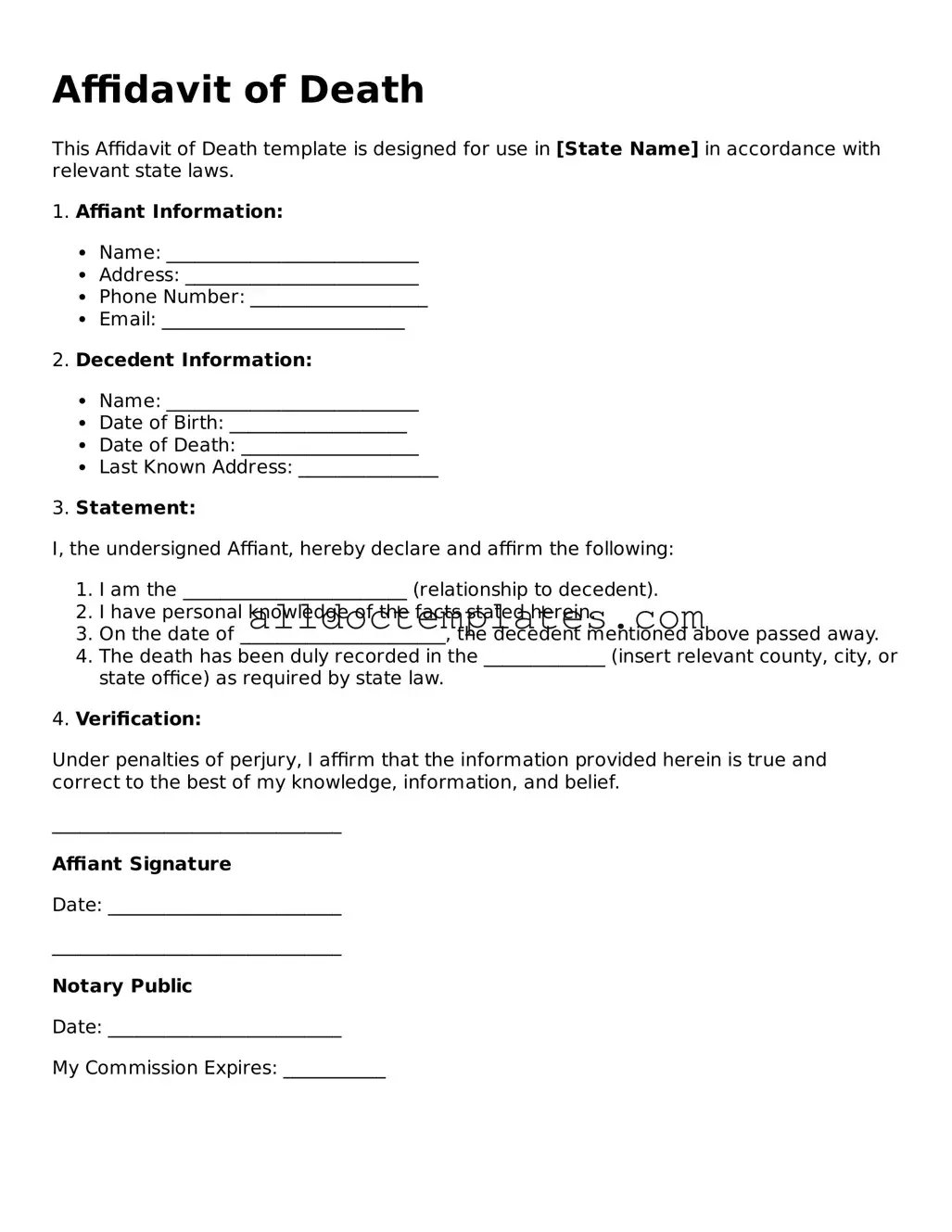Affidavit of Death
This Affidavit of Death template is designed for use in [State Name] in accordance with relevant state laws.
1. Affiant Information:
- Name: ___________________________
- Address: _________________________
- Phone Number: ___________________
- Email: __________________________
2. Decedent Information:
- Name: ___________________________
- Date of Birth: ___________________
- Date of Death: ___________________
- Last Known Address: _______________
3. Statement:
I, the undersigned Affiant, hereby declare and affirm the following:
- I am the ________________________ (relationship to decedent).
- I have personal knowledge of the facts stated herein.
- On the date of ______________________, the decedent mentioned above passed away.
- The death has been duly recorded in the _____________ (insert relevant county, city, or state office) as required by state law.
4. Verification:
Under penalties of perjury, I affirm that the information provided herein is true and correct to the best of my knowledge, information, and belief.
_______________________________
Affiant Signature
Date: _________________________
_______________________________
Notary Public
Date: _________________________
My Commission Expires: ___________
